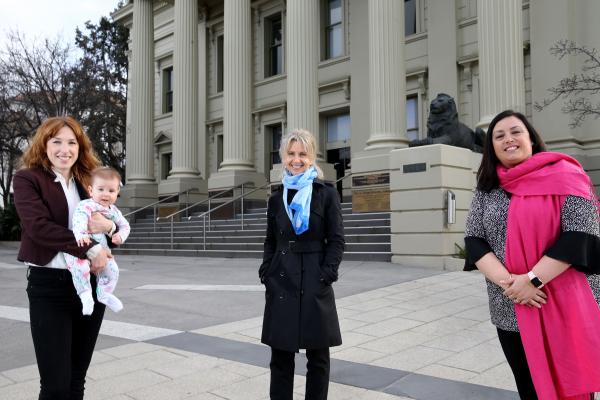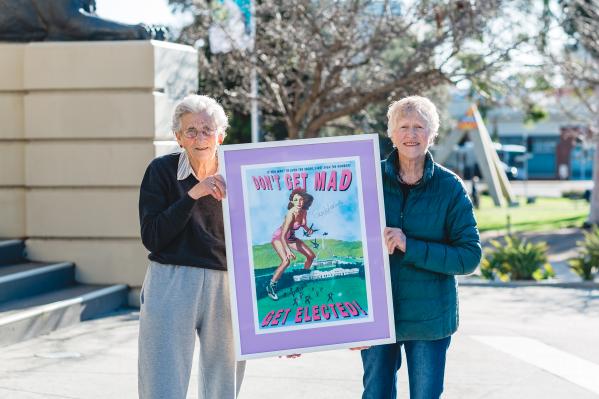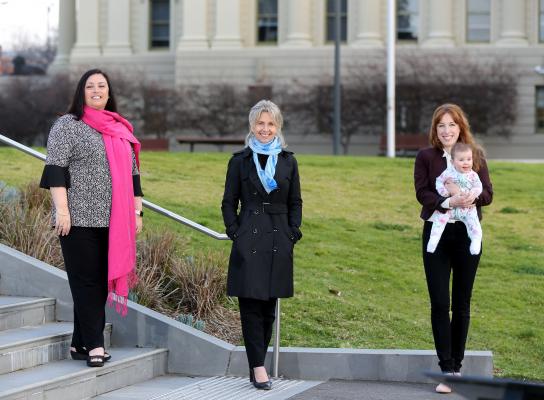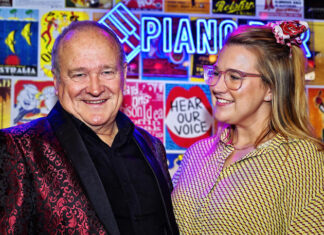
This year marks the 100th anniversary since Victoria’s first female councillor, Mary Rogers, was elected to Richmond City Council in 1920.
As the centenary approaches, Geelong’s local government trailblazers and current female councillors speak about what drove them to represent their community.
A scenic park on the Barwon River and a hall at Mathew Flinders Girls Secondary College bear testament to namesake Zillah Crawcour, Geelong’s first female councillor.
Born Priscilla in 1899 but known widely as Zillah, Mrs Crawcour raised her two daughters and started a business as a single mother after her husband died in 1945.
“She had to raise us, and she really had no income, so she opened a needlework and gifts shop,” remembered daughter Priscilla Pescott, who followed in her mother’s municipal footsteps.
“It was a struggle for her, so she was obviously a really strong, principled woman.”
She worked hard to put her daughters through The Hermitage (now merged with Geelong Grammar).
“She was very keen for women to be educated because in her time a woman’s place was in the home, so she had nothing to fall back on,” Mrs Pescott said.
Her mother’s passion for education was part of her motivation to run for City of Newtown council in 1957, she said.
Mrs Crawcour became Geelong’s first female councillor, 37 years after Victoria’s first woman councillor was elected in 1920.
She served in an era when less than two per cent of councillors were women.
Mrs Pescott remembered her mum’s reaction when organisers of the opening of Geelong’s state government offices “offered her lunch in another room so she wouldn’t be embarrassed”.
“[She and another Newtown councillor] just walked out – there was no way they were putting up with that,” she said.
“It’s hard to imagine that happening today.”
Mrs Crawcour died as mayor in 1977 and her daughter was elected to the City of South Barwon later that year.
“She had come from a very stressful meeting and she died in her sleep,” she said.
“They opened up Geelong Synagogue for her and we had a police escort past City Hall, so she was very well respected.
“I think it was seeing mum as a trailblazer that motivated me to run for council.”
Mrs Pescott remembered experiencing sexism herself as a visiting Colac councillor remarked that councils had “gone backwards since women were elected”.
“That was one example of attitudes at that time, I guess,” she said.
But that mentality changed as women’s representation increased on Victorian councils to 13.4 per cent in 1986.
By the end of Mrs Prescott’s 16-year tenure in 1993, when Geelong’s various councils amalgamated, 21 per cent of Victorian councillors were women.
“Now you look around and female councillors are pretty prominent,” she said.
Things continued to improve, according to City of Greater Geelong’s first female mayor Barbara Abley (2002-2004), who said she mostly received the respect her position deserved.
Except, occasionally, when an out-of-town businessman or developer mistook her for the mayor’s personal assistant, Ms Abley remembered with amusement.
“I’ve always acted on the premise that it should the best candidate for the job, whether you’re male or female,” she said.
Now 37.5 per cent of councillors and 47.4 per cent of mayors in Victoria are women, according to the Department of Environment, Land, Water and Planning.
The Victorian Government hopes to make this 50 per cent for both by 2025 under its gender equality strategy.
Stephanie Asher, who became City of Greater Geelong’s second female mayor last October, encouraged local women to put their hands up for this year’s elections.
“I’ve found great joy as a councillor in achieving things that I know wouldn’t have been possible without intervention and directed effort,” she said.
“We do need more women on council – it is well documented that a minimum 30 percent female presence on company boards brings better decisions.”
Deputy Mayor Kylie Grzybek said balancing work and family with being a councillor was a challenge but she got “so much out of talking to the community”.
“You get a real sense of what makes people enjoy where they live, work and play.”
Fellow female councillor Sarah Mansfield said her background as a GP inspired her to run.
“I saw that the things that have the biggest impact on people’s health and wellbeing aren’t things that doctors can do much about,” Cr Mansfield said.
Councillors could make a difference in areas including the environment, access to housing and food, support services and cycling options, she explained.
While juggling council with raising two young children had been challenging, making a difference had been “so rewarding”, Cr Mansfield said.
But COVID-19 restrictions could make campaigning for council in 2020 more difficult for first-time candidates, especially women, according to Women in Local Democracy (WILD).
WILD Geelong convener Jenny Wills said increased responsibilities for people in caring roles and households, primarily women, would make campaigning even more challenging.
But the group’s Y WILD initiative, encouraging women aged 17 to 35 to get involved in local politics, could make a difference in the 2024 council elections, Mrs Wills said.
WILD is also proposing a local government gender equality summit, post-October, to celebrate the centenary of Mary Rogers’ election and develop a state-wide strategy for 50:50 representation.
Details: www.facebook.com/GeelongWILD/








